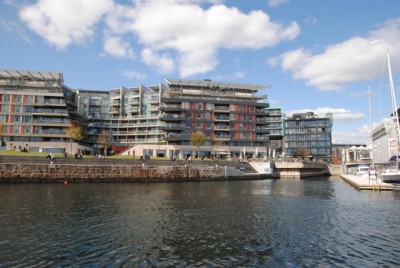Tens of thousands of Norwegians have taken off this week to spend the Easter holidays at a “hytte,” or holiday home, in the mountains or other rural areas. Now increasing numbers of people living outside the cities are doing the reverse, and heading into town for time off in urban surroundings.

Norwegian Broadcasting (NRK) reports that in Oslo’s fashionable Frogner district alone, around 35 percent of the available housing units are owned by people who do not use them as a primary residence. Some bought apartments as an investment or as a place for their college-age children to live while students. Increasing numbers, though, are buying urban dwelling units as a form of holiday residence, or a place to stay while visiting friends and family in the city.
Conscious strategy
One woman from the mountainous county of Sogn og Fjordane in western Norway told NRK that she bought a condominium in the capital as a place to spend weekend getaways, and when she visits her grown children and grandchilren who live in Oslo. Arvid Andenæs, managing director of a major bank in Sogn og Fjordane, said lending to such investors has become big business.
“This has been a strategy from our side the past 10 years,” Andenæs told NRK. He noted that the bank started out “trying to follow up our youth” who moved to the cities and needed bank loans.
“But we’ve also found that when our children move to the cities and there are grandchildren in the picture, many want to spend more time in the city than in the rural areas,” Andenæs said. “And then they invest in a condominium and use it as a ‘hytte’ in the city.”
He said that nearly half of all home lending by banks in Norway’s outlying districts is made to those who establish homes or want second homes in the cities. In Oslo, the downtown area, Frogner and St Hanshaugen are most popular.
‘Contributes to housing shortage’
Not everyone is pleased by the trend. Roger Bjørnstad, chief economist at analysis bureau Samfunnsøkonomisk analyse, said the ‘urban hytte’ investment contributes towards driving up the price of housing in Norwegian cities. While many young people struggle to break into the housing market, lots of units are sitting empty most of the time until their owners arrive for a visit.
“We have a shortage of housing in the cities, given the strong population growth we’ve seen,” Bjørnstad told NRK. “So when people buy homes that are mostly standing empty, it contributes to the housing shortage.”
He links the trend to Norway’s relatively low property taxes. “We have low tax on our primary homes, and taxes on our homes number-two and three are taxed at a lower rate than money we deposit in the bank or invest in the stock market,” Bjørnstad said. “One solution would be to tax second homes harder.”
Others don’t see any problem that needs a “solution” like that proposed by Bjørnstad. Andenæs said banks in the districts earned around NOK 100 million on their lending for second homes, while those buying them seem to prefer spending weekends at the museums, restaurants or theaters in the cities than at home on the farm.
newsinenglish.no/Nina Berglund

